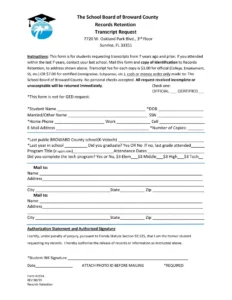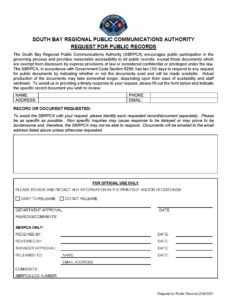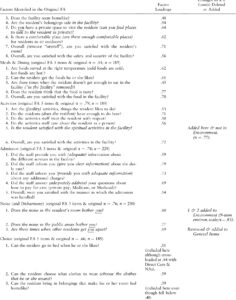Using a pre-designed structure offers several advantages. It ensures requests include all necessary information, such as specific dates, document types, and contact details, reducing back-and-forth communication and potential delays. Furthermore, a clear and well-organized request helps agencies locate and retrieve the relevant records more quickly. This efficiency saves valuable time and resources for both the requester and the government agency. Ultimately, employing such a format promotes a smoother, more transparent process for accessing public information.
This article will delve into the specifics of acquiring public records in Ohio, including the legal framework, eligible records, procedures for submitting requests, associated costs, and potential challenges one might encounter. It will also offer practical guidance and resources to navigate the process successfully.
Key Components of an Ohio Public Records Request
Effective requests for Ohio public records generally include several key elements to ensure clarity and completeness. These components help facilitate a smooth and efficient process for both the requester and the records custodian.
1. Requester Information: Clear identification of the individual making the request, including full name, mailing address, telephone number, and email address, enables prompt communication regarding the request status and facilitates delivery of responsive records.
2. Agency Information: Accurate identification of the specific government agency holding the requested records is crucial. This includes the agency’s name and the specific department or office, if known.
3. Record Description: A detailed and specific description of the requested records is essential. This should include the type of record, date range, subject matter, and any other relevant identifying information, such as titles, file numbers, or names of individuals involved. The more precise the description, the more efficiently the agency can locate the records.
4. Request Format: While not always mandatory, specifying the preferred format for receiving the records (e.g., paper copies, electronic files, specific file types) can expedite the process and ensure compatibility with the requester’s systems.
5. Delivery Method: Indicating the preferred method for receiving the records (e.g., mail, email, in-person pickup) simplifies delivery and reduces potential delays.
6. Fee Acknowledgment: Acknowledging the potential for associated fees for copying, redaction, or other services related to fulfilling the request demonstrates understanding of the process and allows for informed decision-making.
7. Signature and Date: While not always required, including a signature and date can formalize the request and provide a clear record of when it was submitted.
Careful attention to these components increases the likelihood of a timely and successful outcome when requesting public records in Ohio. Providing comprehensive information upfront streamlines the process, minimizing potential misunderstandings and delays.
How to Create an Ohio Public Records Request
Creating a well-structured public records request increases the likelihood of a prompt and complete response from Ohio government agencies. A systematic approach ensures all necessary information is included, facilitating efficient processing.
1. Select a Format: Begin by choosing a suitable format. While a formal letter is common, email or even a standard form, if available from the specific agency, can also be utilized. Consistency in formatting ensures clarity.
2. Identify the Agency: Clearly identify the government entity holding the desired records. Include the agency’s full name, specific department or office (if known), and the full mailing address.
3. Describe the Records: Provide a detailed description of the requested records. Specificity is crucial. Include dates, document types, subject matter, individuals involved, and any other relevant identifiers (e.g., file numbers, case names).
4. Specify the Request Format: Indicate the preferred format for receiving the records (e.g., paper copies, electronic files, specific file types like PDF or Excel). This aids the agency in preparing the response.
5. Outline the Delivery Method: State the desired delivery method (e.g., mail, email, in-person pickup). Include contact information for delivery purposes, such as an email address or physical address.
6. Acknowledge Potential Fees: Include a statement acknowledging potential fees for copying, redaction, or other services. This demonstrates awareness of the process and facilitates a smoother transaction.
7. Date and Sign (if applicable): If using a physical letter, include the date and signature. While not always required for electronic submissions, it can add a degree of formality.
A comprehensive and clearly articulated request reduces ambiguity and potential delays. Accuracy in identifying the agency and describing the desired records is paramount. Specifying preferred formats and delivery methods streamlines the fulfillment process, ultimately contributing to a more efficient exchange of information.
Access to public records is a fundamental right, vital for government transparency and public accountability. Utilizing a structured approach, though not mandated, significantly enhances the efficiency of requests for Ohio public records. Clear communication, specific descriptions of the information sought, and an understanding of the process are key to successful retrieval of these records. This methodical approach facilitates timely responses, reduces back-and-forth communication, and ensures both requesters and government agencies operate effectively within the established framework.
Empowering citizens with the tools and knowledge to navigate the public records process strengthens democratic principles and fosters a more informed and engaged public discourse. This access serves as a critical mechanism for oversight, ensuring government accountability and promoting open communication between citizens and their government. The ability to obtain public records is essential for maintaining a transparent and participatory democracy in Ohio.


